Joe Slovo was a South African politician, and an opponent of the apartheid system. A Marxist-Leninist, he was a long-time leader and theorist in the South African Communist Party (SACP), a leading member of the African National Congress (ANC), and a commander of the ANC's military wing Umkhonto we Sizwe (MK).

Tower Hamlets Cemetery Park is a local nature reserve and historic cemetery in the London Borough of Tower Hamlets within the East End of London. It is regarded as one of the seven great cemeteries of the Victorian era.
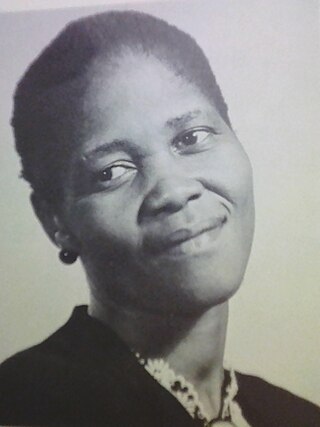
Lilian Masediba Matabane Ngoyi, "Mma Ngoyi", was a South African anti-apartheid activist. She was the first woman elected to the executive committee of the African National Congress, and helped launch the Federation of South African Women.

Olšany Cemeteries is the largest graveyard in Prague, Czech Republic, once laid out for as many as two million burials. The graveyard is particularly noted for its many remarkable art nouveau monuments.
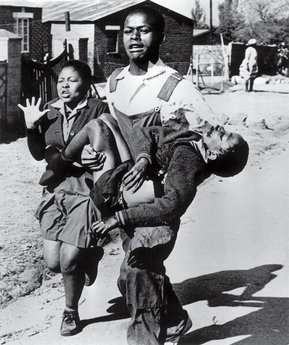
Zolile Hector Pieterson was a South African schoolboy who was shot and killed at the age of twelve during the Soweto uprising, when the police opened fire on black students protesting the enforcement of teaching in Afrikaans, mostly spoken by the white and coloured population in South Africa, whereas they wanted to learn their native languages, Xhosa and Zulu. A news photograph by Sam Nzima of the mortally wounded Pieterson being carried by another Soweto resident while his sister ran next to them was published around the world. The anniversary of his death is designated Youth Day.
Orlando is a township in the urban area of Soweto, South Africa. The township was founded in 1931 and named after Edwin Orlando Leake, Mayor of Johannesburg from 1925 to 1926. It is divided in two main areas: Orlando West and Orlando East.
Hastings Ndlovu was a schoolboy who was killed in the Soweto uprising against the apartheid system in South Africa.

The Soweto uprising was a series of demonstrations and protests led by black school children in South Africa that began on the morning of 16 June 1976.
Isithwalandwe/Seaparankoe, until 1994 known as the Isithwalandwe Medal, also known as the Isithwalandwe Award and also spelt Isithwalandwe and Isithwalandwe/Seaparankwe, is the highest award given by the African National Congress (ANC) "to those who have made an outstanding contribution and sacrifice to the liberation struggle", that is, those who resisted the apartheid regime in South Africa (1949−1991) in various ways.
Teboho "Tsietsi" MacDonald Mashinini in Jabavu, Soweto, South Africa, died in the summer of 1990 in Conakry, Guinea, and buried in Avalon Cemetery, was the main student leader of the Soweto Uprising that began in Soweto and spread across South Africa in June, 1976.

The East London Cemetery and Crematorium are located in West Ham in the London Borough of Newham. It is owned and operated by the Dignity Funeral Group.
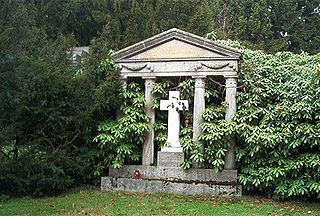
Ohlsdorf Cemetery in the Ohlsdorf quarter of the city of Hamburg, Germany, is the biggest rural cemetery in the world and the fourth-largest cemetery in the world. Most of the people buried at the cemetery are civilians, but there is also a large number of victims of war from various nations. The cemetery notably includes the Old Hamburg Memorial Cemetery with the graves of many notable Hamburg citizens.

Regina Mundi, designed by architect Anthony Noel Errol Slaven, is the largest Roman Catholic church in South Africa. It is located in Rockville, Soweto, a populous black urban residential area within the city of Johannesburg. Due to the role it played as a place of gathering for the people of Soweto in the years before, during, and after the anti-apartheid struggle, it is often referred to as "the people's church" or "the people's cathedral".
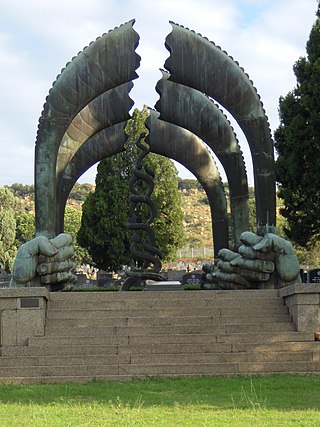
Westpark Cemetery is a large cemetery in Johannesburg, South Africa, and is the resting place of some of the country's well-known citizens. It is a non-denomination designated burial ground, and thus has Christian, Jewish, Muslim and Chinese burial areas. The Jewish section contains a Holocaust Memorial, erected in 1959.
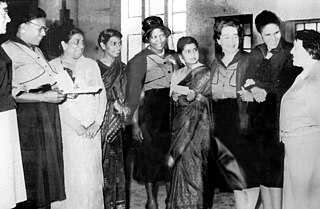
The Federation of South African Women (FEDSAW) was a political lobby group formed in 1954. At FEDSAW's inaugural conference, a Women's Charter was adopted. Its founding was spear-headed by Lillian Ngoyi.
Women's March was a march that took place on 9 August 1956 in Pretoria, South Africa. The marchers' aims were to protest the introduction of the Apartheid pass laws for black women in 1952 and the presentation of a petition to the then Prime Minister J.G. Strijdom.
The National Heritage Monument is a group of copper statues representing anti-apartheid activists, Zulu chiefs and missionaries in Groenkloof Nature Reserve, South Africa. The monument is meant to reflect the struggle for liberation going back into the 1600s. The project was started in 2010, but as of 2015, only has 55 statues. A total of 400 to 500 statues are planned. When complete, the monument will be called "The Long March to Freedom".

Annie Silinga (1910-1984) was a South African anti-pass laws and anti-apartheid political activist. She is known for her role as the Cape Town African National Congress Women's League President, a leader in the 1956 anti-pass Women's March to the Union Buildings in Pretoria, South Africa and the only African woman in the 1956 treason trial in South Africa.

On 21 March 1985, on the 25th anniversary of the Sharpeville massacre, members of the South African Police opened fire on a crowd of people gathered on Maduna Road between Uitenhage and Langa township in the Eastern Cape, South Africa. The crowd had been attending a funeral of one of the six who had been slain by the apartheid police on 17 March 1985. They had gathered at Maduna Square and were heading towards the house where the funeral was held when the police blocked the road with two armoured vehicles and ordered the crowd to disperse. When the crowd failed to comply immediately, police opened fire on the crowd, killing 35 people and leaving 27 wounded. The incident became known as the Uitenhage/Langa massacre.
Lilian Diedericks was a South African activist known as a founding member of the Federation of South African Women.











